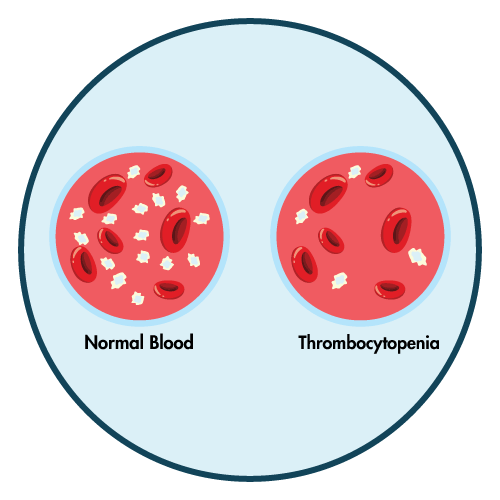| Name | Deferasirox |
| Classes |
Chelating Agent |
| Diseases |
Cancer Leukemia |
Deferasirox
Deferasirox is an iron chelator belonging to the class of drugs known as chelating agents. It works by binding to excess iron in the body and forming a stable complex that is excreted in the urine. This helps to reduce the amount of iron that can cause damage to the body's tissues.
Deferasirox is indicated for the treatment of chronic iron overload due to blood transfusions in patients with transfusion-dependent anemias such as beta-thalassemia major and sickle cell disease. It is also used in the treatment of chronic iron overload due to non-transfusion-dependent thalassemia syndromes.
- Deferasirox is administered orally as a tablet or suspension. The dosage and duration of treatment depend on the patient's age, weight, and degree of iron overload.
- Transfusional Iron Overload: For patients with an estimated glomerular filtration rate (eGFR) higher than 60 mL/min/1.73 m2, the initial dose of oral suspension is 20 mg per kg of body weight once daily. To the closest whole tablet, calculate the dosage.
- NTDT Syndromes: For patients with an eGFR higher than 60 mL/min/1.73 m2, the initial dose for NTDT syndromes is 10 mg per kg of body weight administered as an oral suspension once daily. To the closest whole tablet, calculate the dosage.
Side effects associated with deferasirox include-
- Gastrointestinal disturbances such as nausea, vomiting, diarrhea, and abdominal pain
- Skin rash
- Headache
- Dizziness
- Increased serum creatinine levels
- Rare but serious side effects include hepatic failure, renal failure, and agranulocytosis
- Before starting therapy, serum creatinine levels should be measured twice for acute kidney injury. Renal function should be monitored during deferasirox therapy, and the dosage should be reduced or therapy should be interrupted if toxicity occurs.
- Hepatic function should also be monitored, and therapy should be interrupted or the dosage reduced for toxicity.
- There is a risk of fatal and nonfatal gastrointestinal bleeding, ulceration, and irritation, particularly in patients who are taking deferasirox in combination with drugs known to have ulcerogenic or hemorrhagic potential.
- Blood counts should be monitored during deferasirox therapy for bone marrow suppression, which can lead to neutropenia, agranulocytosis, worsening anemia, and thrombocytopenia, including fatal events.
- Elderly and pediatric patients should be closely monitored for toxicity due to age-related risk.
- Severe hypersensitivity reactions should be treated with medical intervention, and deferasirox should be discontinued. Discontinuation is also recommended for severe skin reactions, including Stevens-Johnson Syndrome, toxic epidermal necrolysis, and Drug Reaction with Eosinophilia and Systemic Symptoms.
Contraindication
Known hypersensitivity to deferasirox or any component of deferasirox
None known.
deferasirox is contraindicated in-
- Estimated GFR less than 40 mL/min/1.73 m2 (severe kidney problems)
- Patients with poor performance status.
- Patients with high-risk MDS.
- Patients with advanced malignancies.
- Patients with platelet counts less than 50 x 109/L (thrombocytopenia)
 Bangla
Bangla English
English






